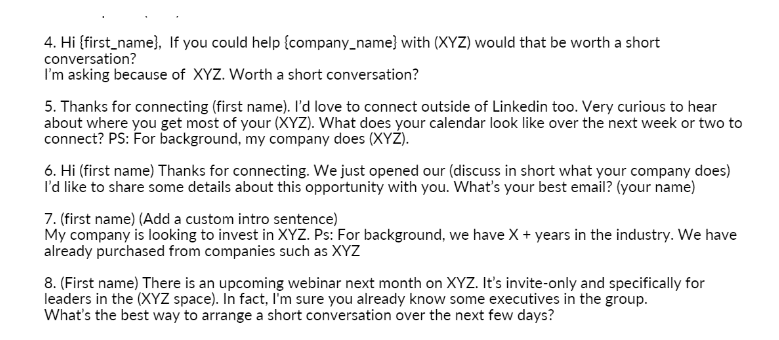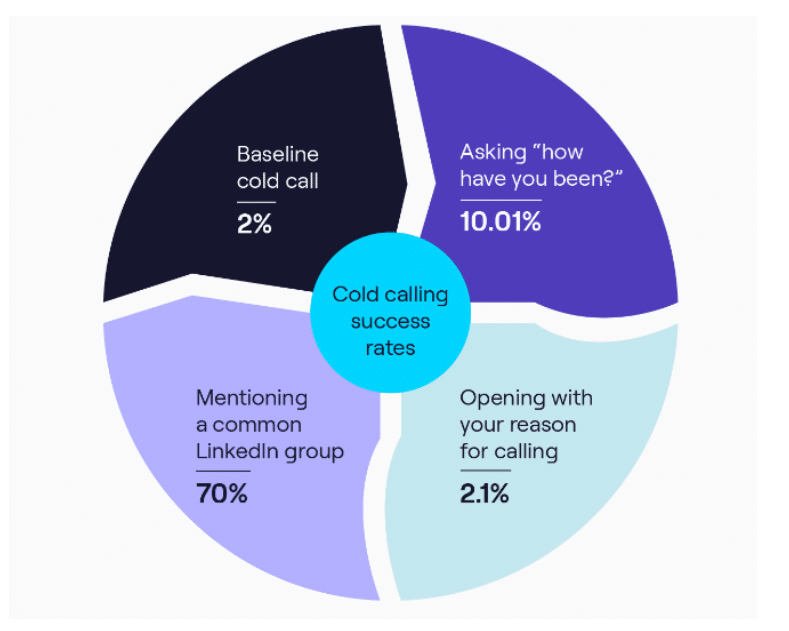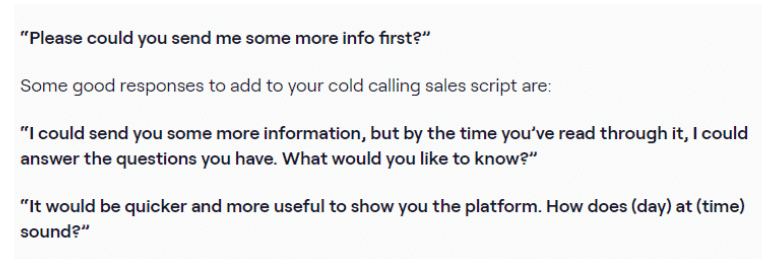Outbound is the way to go if you’re looking for immediate leads.
Many marketers think outbound methods are dead, or too aggressive, but stats prove otherwise.
The trick to running successful outbound sales campaigns is to have the right strategy when using a specific channel.
In this article, we will share 12 innovative ways and strategies to generate outbound leads.
(At SalesBread we specialize in using Linkedin and cold email to reach out to potential customers. In the past 24 months, we have managed to generate close to 7000 qualified leads for our clients. If this intrigues you, hop on a free 15-minute sales strategy call with us.)
1. Linkedin Outreach
Linkedin has proven to be an excellent platform for lead generation.
As mentioned at the outset of this article, we have generated close to 7000 sales-qualified leads for our clients in the past 24 months.
Our metrics are as follows:

Here’s our Linkedin lead generation strategy
Build a list of your ideal target audience based on current buyer’s data
We tell our clients to have a look at WHO has purchased their product/service within the past 6 months.
What do these clients have in common?
For example:
- Are they all in a specific industry? ( HR, tech, social media marketing, health, and wellness)?
- Who are the decision-makers? (Which job title is buying from you? The CEO? The marketing manager? )
- Who’s on their payroll? (Content marketing team? Employee training department? Sales reps?)
- Are all buyers located in the same area? (USA? Europe? Africa?)
- Are these companies Fortune 500?
- How big are these companies? (10-50 employees? 100+ employees?)
- Have they recently been funded?
- Do they use the same CRM tool like Hubspot?
When we build lists, we analyze buyers’ data through 34 different filters. This helps us find common buying patterns between your ideal clients; and once we have these patterns figured out, we will build look-a-like lists of prospects.
Filter your list between your 2nd-degree network & recently posted on Linkedin
Once we have a list, we will narrow it down further, by filtering it through your second-degree network. The reason for this is that prospects are more willing to respond to your outreach messages if you already have a shared connection.
By ultra-refining your list of prospects, you will be reaching out to prospects who will say yes to a sales call.
Prospects who need what you’re selling.
We also filter by recently posted because this shows us which users are active on the platform.
You only want to send personalized messages to people who actually use LinkedIn regularly.
If you notice that your prospects aren’t active on the platform, try to find their contact information so that you can reach out to them via email or sms.
(NOTE: When lists are ultra-refined it leads to better conversion rates for our clients. Why? Because we are sending them leads who actually want what they are selling.)
Write personalized outreach messages based on research
In our outbound sales process, we ALWAYS use personalization.
If you don’t personalize your messages, prospects aren’t going to reply to you. But it’s important to note that personalization goes beyond just using the prospect’s first name.
You actually have to research each prospect on your list and find something about them to add to your message.
This video explains the CCQ method we use for writing personalized messages.
- Compliment them
- Mention a commonality
- Or ask a question
Here are some example templates below:

NOTE:
You need to personalize your connection requests and follow-ups.
Follow up consistently and ask for a meeting
Some sales teams forget how important follow-ups are. Or they end up on the other side of the coin and follow up too much. This type of approach can be viewed as spam and becomes frustrating to the prospect.
We have found that the ideal way to follow up is to add more personalization to the message and wait 3 days between each touch point.

Having a clear CTA allows the prospect to know what you want from them and what’s the next step.
Below are some examples of follow-ups with CTAs that ask for a meeting.

We make it as easy as possible for the prospect to reply to our messages. We use words like:
- “Short conversation”
- “What does your calendar look like”
- “Worth a conversation?”
Try it out…
Do some A/B testing and see whether this method works for your company. Find 50 of your ideal customers on Linkedin and follow the above steps.
If it works and you would like to try this approach on a more regular basis, reach out to us here.
2. Cold Email Outreach
Cold email outreach is still effective. Stats show that the average open rate of cold emails is 44%.
And approximately 25% of email campaigns have an average reply rate of 10-20%.
Our outbound sales team uses the same approach to cold email, as we do to Linkedin outreach.
- Build an ultra-refined list of your ideal target customer based on data.
- Find the right people to reach out to at these companies by using various tools, such as Linkedin Sales Navigator and Apollo.io.
- Write personalized emails based on prospect research
- Follow up 3-5 times every 3 days
- Ask for a booked sales meeting
Does this approach work?
Yes, it does. We are still seeing great results from email outreach when using the above sales tactics.
We advise though, that you shouldn’t send more than 20 – 25 emails per day.
The reason for this is that if you send hundreds of emails in one day, your mails will end up in the spam folder. You don’t want to develop a bad sender reputation, because even if you write the “perfect email” prospects aren’t going to see it.
So be wary of automation tools that send thousands of emails a month, especially for email outreach.
Email warm-up automation tools are a good idea because these pieces of technology automatically send emails on your behalf to a controlled group of recipients that will respond automatically.
It tells spam filters that this “sender” has a good reputation, and this helps increase your email deliverability rate.
Email outreach tips
- Keep emails short; Only add 3 or 4 sentences.
- Don’t use a sales pitch in your email
- Make use of personalization
- Only mention 1 value proposition per email.
- Have a clear call to action that asks for a booked meeting
- Talk about the prospect 90% of the time and only 10% about yourself for context
If you’re interested in learning all the tricks of the trade listen to The Cold Outreach Podcast with Jack and Jeremey, here.

3. Cold Calling
Cold calling seems to be the least effective outbound sales strategy, with a 2% success rate.
But if you’re keen to give this sales prospecting approach a try, one company mentions that if you use cold calling the right way, you can increase your success rate to 10%.


In certain countries, cold calling isn’t legal, without a person’s consent. Below is a list of telemarketing regulations.

Cold calling strategy
Research your prospects
For any outbound sales success, research needs to happen before you interact with the prospect.
According to various cold calling companies, they have a 5 step approach to finding your ICP. (Ideal customer profile.)

For example:
- The industry you’re selling to needs to make sense; so there has to be an industry fit.
- Potential clients are in similar funding rounds; meaning they have the money to buy from you.
- There’s a need for these companies to buy your product. Your product/service solves their pain points.
- Employee or company sizes are similar
- There is also a geographical fit.
Once you build look-alike lists, you can then reach out to the right people at these companies.
Another option is to interview current clients of yours and interview them.
Ask them the following questions:

Practice with a script before calling
Create a cold-calling script before you make a phone call. This will help you know what to say, and take away some nerves.
Cognism has a ton of cold-calling scripts your sales reps can use. Stats show that when you talk about the prospect more than yourself, the chances of them engaging with you will be higher.
Some other tips are:
- Ask open-ended questions.
- Keep it short; If you ask for 3 minutes, stick to 3 minutes.
- Keep your tone friendly and excited, even if a prospect seems unresponsive.
- Be repetitive. – For example, if a prospect says that they find all their leads manually, you can repeat what they have just said back to them.
Closing
Think about any objections that a prospect might have, and then think about how you would respond to those objections.
For example, if someone asks for more info, you could say the following:

4. Social Selling
Social selling is a mix of inbound and outbound. It’s similar to how we engage with prospects on Linkedin, but you could basically do this on any social media platform.
Social selling involves reaching out to new customers, who are already familiar with your brand. So this could be your followers or even prospects who reach out to you via comments on the platform.
Some b2b brands use Instagram and even Tik Tok to create awareness of their company.
Chili Piper is a tech company that does this. They let their users know what’s important to them as a company.

This makes it easier when reaching out to companies who are already familiar with your company and what you stand for.
You’re not just telling people what you do, or what you stand for, but rather you’re showing them.
If Instagram is your platform of choice, remember it’s highly visual. So create gorgeous pages that stand out.
Adobe is a company that kills it with social selling on Linkedin. Their pages are aesthetically appealing and keep up with current trends.


Here are some tips for social selling
- Be real, share your story on social media. People enjoy seeing the good and the bad.
- Nurture your prospects by responding to their comments and what they share
- Stay active on the platform and post consistently
- Show off your achievements or testimonials for social proof
- Follow industry influencers to stay up to date with current trends
- Post on the platform where your buyers are. If you’re selling coffee to funky coffee shops, Instagram could be the right platform. Whereas if you are selling saas products, Linkedin might be the better platform.
6. Webinars
Interestingly stats show that 79% of buyers will share information in exchange for a webinar, And 44% of marketers who have hosted a webinar say that it was successful in generating potential buyers.
But as a salesperson, you also need to realize that high-quality leads aren’t going to just stream in from hosting a webinar. Experts mention 5 tips for successful lead gen through webinars.
Research
Before you decide to host your webinar, you need to figure out your ideal buyer persona. Use the data you have to attract the right people to your webinar.
For example:
- Who should you invite? (Which buyer persona would be most willing to purchase from you after watching your webinar?)
- What should the topic of your webinar be about?
- How long should your webinar be? 30 min? 1 hour?
- Will you have any guest speakers participating in the webinar?
- When will you host the event?
- Think about key points that you would like to highlight on the registration page.
Think about content
What will you be talking about in your webinar?
Remember not all prospects are willing to buy from you just yet.
So think about what will appeal most to those who are ready to buy from you. Discuss their pain points and how your company can solve their bleeding neck problem.
What format will you use?
When you think about hosting your webinar, think of what its purpose will be. Will it be to educate? Will you go through case studies and how your company has helped clients? Or are you going to share a demo?
Promote
Next, you will need to promote your webinar on various channels. Whether it’s via email, social media, or paid advertising.
Create a scoring process and follow up with leads
Either on registration or at the end of the webinar, think of how you can score leads from cold to hot.
According to Zoominfo, consider the following when scoring your leads.

Follow-up
Lately, keep your company in the minds of buyers, by posting relevant content on social media, having an email marketing strategy (if they are added to a list), and follow-up with each prospect personally.
You could write them a personalized email and offer them something. Whether it’s a free demo or an ebook.
7. Trade Shows

There’s no doubt that trade shows are great for generating high-quality leads.
These networking events help businesses to learn about new and exciting products, as well as source companies that could be helpful to their businesses.
If you’re interested in finding out which trade shows are happening this year, click this directory.
Here are some tips for winning over new leads at trade shows
- Use your best sales professionals to represent your company
- Find out who will be attending the show (Attendee lists can be made available in advance; this will help you know which businesses will be there and who might be interested in what you have to offer.)
- Prepare your staff by helping them know how to answer any questions that prospects might have. Also, help your team figure out which questions to ask prospects. This might help figure out who’s a serious buyer and build referrals.
- Give away free things, or host a competition
- Set up an aesthetically appealing booth that will make prospects what to chat with you.
Below are some examples:



8. Lead Nurturing – Reach out to website visitors, emails lists
Reaching out personally to those who are already familiar with your brand is a great way of generating new business relationships, and for sales teams to close deals.
For example… I once tried out an SEO tool called Dashword.
The owner of the company personally reached out to me after my free trial ended.

Yes, I did.

The owner of the company replied to my above email personally. Not via some random automation tool.

Because the owner answered my questions and took a personal interest, I signed up for their month-to-month SEO package.
Sometimes a bit of lead nurturing and a personal approach goes a long way.
So follow up with leads. Ask the right questions, and make them feel like they aren’t just a number.
9. Tv, Radio, and Print Ads
Many marketers still make use of TV, radio, and print ads for outbound. The only problem with this is that it’s really hard to track who has seen, or heard your advert.
So this makes it hard to really follow up on leads. But you can figure out an estimate of how many people might see or hear your ads.
For example, if you have a print ad in a subway station, you might know that 10 000 people take the train daily.
Stats show that the ROI for print ads is about $7.81 for every $1 spent.

10. Influencer shout outs

The above table shows how much you can expect to pay an influencer for a shout-out, depending on how many followers they have.

It could be macro or micro-influencers.
Basically, anyone who might have your ideal target audience following them.
You could even get clients to post testimonials about your company as a shout-out.
This might be a cheaper option, as many clients don’t mind writing something positive about your services on social.

11. Paid Ads on Social
Paid advertising on social media isn’t exactly an outbound method, but it’s still noteworthy to mention.
At SalesBread we don’t make use of paid ads.
It might work for some companies, but we have had too many clients tell us that they spent thousands of dollars on paid ads, and never even received 1 lead.
But if it’s something you would like to try, read this article.
This isn’t to say that every platform produces the same results.
For example, some companies have found Twitter ads to be a great source of lead generation.
The trick is to see where your ideal target market hands out, and place ads on those platforms.
12. SMS direct messaging
If you haven’t considered using SMS for lead generation, you might want to give it a try.
At SalesBread, we use SMS as a last resort if we can’t reach prospects via Linkedin or cold email.
The same rules apply.
- Use personalization
- Keep your message short and to the point
- Mention why you’re reaching out for context
Some prospects have their phone numbers available online but if you’re struggling to find their numbers, you can use third-party data providers like Apollo.io.

Ready to give any of these outbound sales techniques a try?
It’s worth a shot.
But remember to not limit your outbound sales strategy to one channel or method. Try a few and see which method resonates most with your ideal customers.
If you’re interested in hopping on a free 15-minute strategy call with SalesBread for 1 guaranteed sales lead per day, hit us up below.


